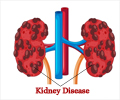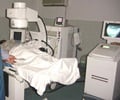Kidney failure patients could be under the impression of being better off getting a new kidney from a young and spry donor. But does donor`s age impact the health of the kidney?

To investigate, John Gill, MD (University of British Columbia, in Vancouver, Canada) and his colleagues analyzed the survival of kidneys from donors of different age groups that were transplanted into recipients of different age groups. Their study included data from all adult kidney transplants from living donors that were performed in the United States from January 1988 to December 2003, with follow-up through September 2007.
With the exception of recipients aged 18 to 39 years, who benefited the most when they received kidneys from donors aged 18 to 39 years, donor age between 18 and 64 years had minimal effect on the survival of transplanted kidneys.
The researchers also looked to see what happens to wait-listed patients who do not receive kidneys from living donors. They determined the likelihood that paitents would receive a kidney from a deceased donor and their risk of being excluded from transplantation (due to death or permanent removal from the wait-list) during the study.
The probability of deceased donor transplantation after three years of wait-listing ranged from 21% to 66% depending on patients' blood type and antibody levels, whereas the probability of being excluded from transplantation ranged from 6% to 27% by age, race, and type of kidney disease. When considering these probabilities, many patients will likely find that participating in living donor paired exchanges—and possibly receiving a kidney from an older-aged donor—is a better option than continuing to wait for a deceased donor transplant.
"This information should help increase participation and efficiency of living donor paired exchange programs because it alleviates patient concerns about receiving a kidney from an older aged living donor that currently limits acceptance of a proposed transplant in paired exchange programs," said Dr. Gill.
Advertisement















